Runner
Using Widely Available Smartphone Accelerometers to Detect Runner Falls
Overview
South Africa has a rich running and outdoor activities culture. Outdoor activities have risks because participants are often isolated, terrain can be uneven and dangerous, and there are incidents of crime.
MOVER Runner aims to extend previous successes with collision detection using widely available Android smartphone sensors to detect if a runner has fallen.
Establishing Thresholds
There are two approaches from previous work which could determine a potential runner collision. The forces of a collision upon a smartphone are established and a collision has occurred if those forces are met. Alternatively the forces upon a smartphone during expected usage are established and a collision has likely occurred if forces which are outside of the expected range occur. 'Expected usage' is a runner storing the smartphone in either their pocket, arm-band or backpack, and using the device during various running speeds (some more vigorous than others), on various path types, and bypassing obstacles.
Testing Environments and Trials
Three environments were chosen which best emulate the basic environments a runner would experience; road, hill, and obstacles. Consistency was key for trials of each environment, the same distance was traveled, the same direction, and preferably the same average speed was maintained. The environments are described below, and any routes indicated on a Google Map have personal identifiable information removed.
Road
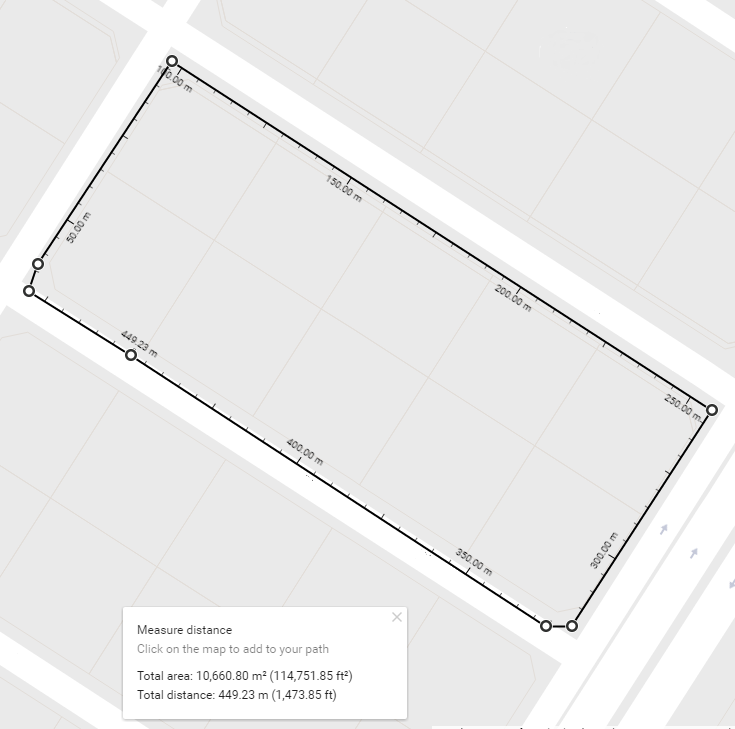
Figure 1. The basic road route.
Figure 1 represents the most basic environment a runner would encounter. It is a flat public road in a neighbourhood. The route is approximately 450 metres (m) and includes running onto and off pavements (road safety).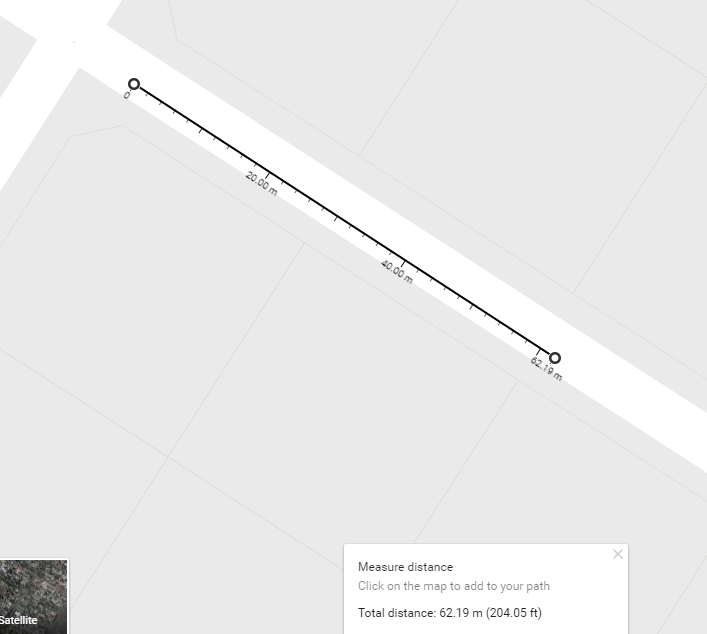
Figure 2. The sprinting route.
Figure 2 indicates the route during a sprint, this route is a subset of the road route as a runner will often intermittently sprint shorter distances during their route. Sprints were approximately 62m long (three lamp-posts).
Hills
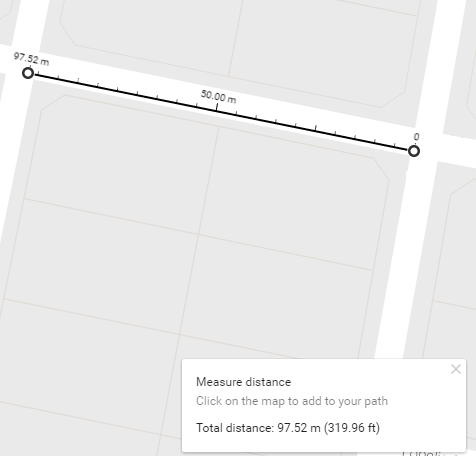
Figure 3. The hill route.
Figure 3 has approximately a constant gradient of 6.9\% (a change in elevation of 6.779m) and is approximately 98m long. Moving up the hill and moving down the hill were treated as separate trials.
Simulated Falls and Obstacles
Falls could not be replicated because there is risk for injury and testing device could be damaged. Collisions were simulated as close as possible to the real event without creating risk. Falls were simulated by falling onto a mattress which was 32 centimetres (cm) thick. There is variation between mattresses; some are softer than others, the springs are old and worn and do not resist force as expected etc. Mattresses decreases the forces exerted on the smartphone but this was considered.
It is expected that falling to a hard floor which creates sudden negative acceleration will result larger forces. The various obstacles a trial-runner may encounter during an event or trial was considered; the runner may encounter rocks or walls of some sort which will require climbing over, the runner may be required to jump with most jumps being a small hop over an object in the route but also some larger knee-height objects (or a jump requiring a knee-height jump to satisfy the distance), and falls. Figure 4 represents the structure which was chosen that emulates a runner climbing over a rock-shelf, wall, or boulder.
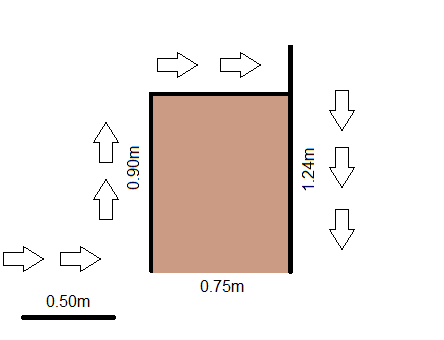
Figure 4. The climbing structure.
Obstacle Course
A final obstacle course was performed by the runner. The course consisted;- 50m run from the start on a flat road
- Another 10m before the user jumps over an obstacle and continues running
- User sprints approximately 30m with a 1.5m uphill
- Runs approximately 10m on uneven Earthy ground
- User climbs over the structure in Figure 4
- User runs approximately another 3m until falling to a mattress
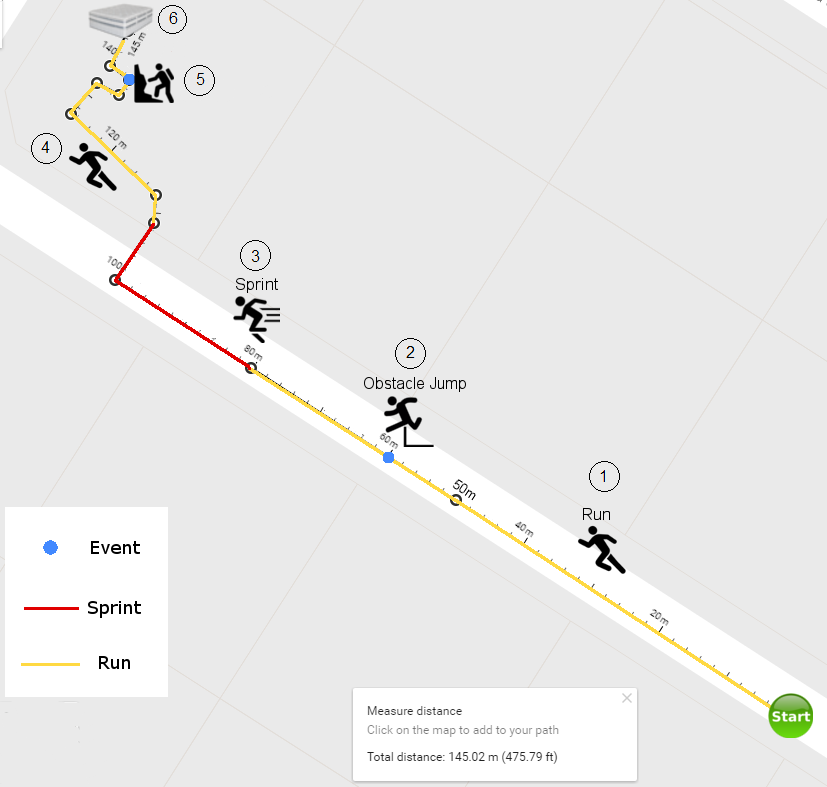
Figure 5. The obstacle course.
Conclusions and Results
A magnitude threshold of 15 was able to detect a total of 14/15 fall events, 93.3, but the instances of false-positives were high, specifically when the smart-phone was carried in a pocket. Carrying the smartphone in a pocket will result in more potential for variation as pace increases or runner's stride varies because the forces experiences by the runner's legs increases. Figure 6 indicates an ideal situation where large readings are detected rhythmically, this would indicate a runner's stride.
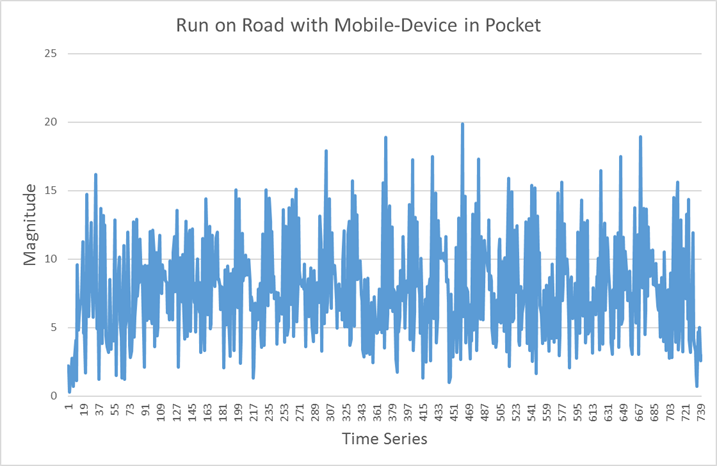
Figure 6. Smartphone in runner's pocket road trial.
Previous work and Mover Vehicle has had success with using accelerometer values to establish a static threshold. An accident is likely to have occurred once the threshold is breached. Establishing a potential threshold required recording accelerometer values while performing runs carrying the smartphone the various ways a runner would (in an arm-band, pocket, or backpack) and at various speeds (walking, running, and sprinting). Having established averages and upper-bounds, events which may trigger a suspected accident but are not had to be addressed. Potential false-positives included runners performing various jumps, climbing over structures, and dropping a smart-phone. Variables like the freedom of movement of the device within its container, running style, and the movement of the device container introduced variation in the accelerometer readings e.g. a non-tightly secured backpack to the runner's body, introduced value spikes and inconsistencies. Finally the average accelerometer values of emulated falls, at various running speeds, were recorded. Comparing the two groups of data indicated the average values of emulated falls at a pace greater than walking was greater than the upper-bounds of values recorded from expected usage. Though there were spikes in the recorded values of expected usage which were greater than the average max values of emulated falls, the spikes are inconsistent and difficult to compensate for, or negate.